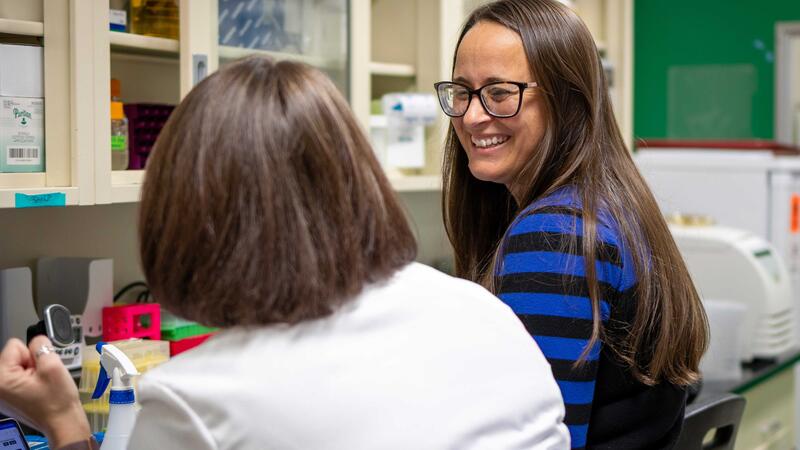News
Unraveling the mysteries of the plant microbiome
Three years after joining the Great Lakes Bioenergy Research Center, Michigan State University microbiologist Sarah Lebeis has been tapped to guide the center’s scientific research.
An insect’s gut might seem an inhospitable place to settle in, but diverse microbes nonetheless make their home there. Yet in the gut, there’s a struggle for the nutrients needed to survive among the resident bacteria and fungi — not to mention the insect.
Alex Linz has thousands of multi-talented, microscopic labmates.
“Why do I love microbes? I think it’s just crazy that they’re all around us, and we can’t see them, and yet if you can dream it up, microbes probably do it,” says the UW–Madison postdoctoral researcher.
Bioenergy crops are a potential source of renewable alternatives for many petroleum-derived products. Great Lakes Bioenergy Research Center (GLBRC) scientists at Michigan State University (MSU) have now devised a system to coax plants into producing higher amounts of two valuable organic materials, terpenes and lipid droplets, and package them together inside cells for easy extraction.
Lager beer is cold, crisp, dry — and worth about half a trillion dollars worldwide. Behind the world’s most popular alcoholic beverage is a yeast adapted to the cold, and hungry for the sugars it will transform into bubbles and booze.
A major goal of the Great Lakes Bioenergy Research Center is to harness the power of microbes to create biofuels. But often, it’s an expensive challenge for scientists to identify the most useful individual variants among thousands of similar microbe strains.
New research on transcriptional pausing, which helps control gene expression in cells, will aid in the understanding of the enzyme RNA polymerase — a key player in the process and an important drug target.
If you’ve ever grown carrots in your garden and puzzled over never once seeing them flower, don’t blame your lack of a green thumb.
Carrots, beets and many other plants won’t flower until they’ve gone through winter. The extended cold gives them the signal to flower quickly once spring arrives, providing the plants an edge in the race to produce seeds.
If environmental engineer Daniel Noguera had his way, he would orchestrate a microbiome to pump out higher-value chemical products.
Five Great Lakes Bioenergy Research Center (GLBRC) researchers have been named to Clarivate Analytics’ 2018 list of “Highly Cited Researchers”.





